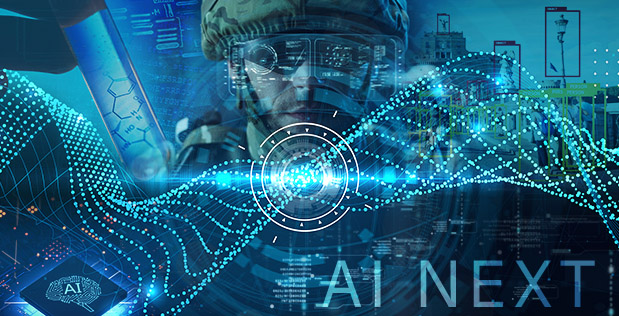Introduction
In the ever-evolving landscape of modern warfare, military organizations across the world are constantly seeking innovative ways to enhance their combat operation analysis and planning. Traditionally, this process has relied heavily on human expertise, historical data, and limited computer-assisted tools. However, with the advent of advanced Artificial Intelligence (AI) and Language Models (LM), there is an unprecedented opportunity to revolutionize and significantly improve these critical aspects of military strategy and decision-making.
In this blog post, we will explore how Language Models, like OpenAI's GPT-3, and AI technologies are being leveraged to enhance combat operation analysis and planning.
1. Data-Driven Decision-Making
AI-driven language models have the capability to sift through enormous amounts of structured and unstructured data from various sources, including satellite imagery, social media, news reports, and historical records. This data can be used to identify trends, analyze enemy movements, and assess the overall situation. Through machine learning algorithms, AI can rapidly process and provide valuable insights into potential threats and opportunities, giving military commanders a more comprehensive and up-to-date understanding of the battlefield.
In the past, military planners relied on limited information sources and slow, manual data analysis. With AI, the sheer volume of data that can be processed is staggering. Satellite imagery can provide real-time updates on troop movements, while social media can offer insights into local sentiments and potential unrest. AI can help identify correlations and patterns in this data, giving military planners a richer and more accurate picture of the battlefield.
2. Scenario Planning
One of the most critical aspects of combat operation planning is scenario analysis. AI can help generate multiple hypothetical scenarios, each with different parameters and outcomes, to assist military planners in making informed decisions. By inputting various factors like enemy strength, terrain, and available resources, AI can quickly simulate and provide insights into potential courses of action, enabling commanders to choose the best course of action based on data-driven forecasts.
AI can conduct numerous simulations, adjusting variables and testing different strategies, which would be prohibitively time-consuming for human planners. By automating this process, AI allows military leaders to explore a wide range of possibilities, ensuring that the chosen course of action is based on the best possible information and analysis.
3. Automated Intelligence Analysis
AI-powered language models can perform advanced natural language processing to analyze and interpret the vast amount of intelligence reports, documents, and intercepted communications. This automation speeds up the intelligence cycle, allowing analysts to focus on high-level strategic thinking and decision-making rather than getting bogged down in data processing. Moreover, AI can identify patterns, anomalies, and hidden connections that may be challenging for human analysts to spot.
In traditional intelligence analysis, human analysts are burdened with the task of manually reviewing and categorizing vast quantities of information. AI can assist by summarizing reports, highlighting key information, and flagging unusual patterns or potential threats. This not only speeds up the decision-making process but also reduces the likelihood of missing crucial details in the deluge of information.
4. Enhanced Communication
Language models can assist in bridging communication gaps within a military unit. They can provide real-time translations and language support, ensuring that information can be shared and understood by personnel from different linguistic backgrounds. This seamless communication helps in faster response times, better coordination, and ultimately more effective combat operations.
Effective communication is a cornerstone of successful military operations, especially in multinational or multilingual settings. Language models can serve as real-time interpreters, breaking down language barriers and ensuring that information flows smoothly between different units and allies. This capability enhances coordination, minimizes misunderstandings, and improves overall operational efficiency.
5. Predictive Analysis
AI can be utilized to forecast enemy intentions and actions based on historical data and current information. This predictive analysis can help military planners anticipate potential threats and adapt their strategies accordingly. By continuously updating its predictions, AI ensures that plans remain flexible and can be adjusted as the situation evolves.
Predictive analysis is a powerful tool for proactive decision-making. By analyzing past enemy behaviors, AI can predict likely enemy actions, allowing commanders to prepare and respond in advance. This can be particularly valuable in situations where rapid decision-making is critical, as it provides a framework for understanding and countering the adversary's moves.
6. Risk Assessment
Combat operation planning involves assessing risks and identifying vulnerabilities. AI can conduct risk assessments by considering various factors such as terrain, weather conditions, and enemy capabilities. By providing risk quantification and analysis, AI allows military planners to make informed decisions about resource allocation and strategy.
AI's ability to assess risk is not limited to a single dimension. It can analyze a multitude of risk factors simultaneously, including logistical challenges, potential casualties, and the geopolitical implications of a military operation. By evaluating these factors in concert, AI provides a more comprehensive understanding of the risks associated with a given course of action.
Conclusion
The integration of Language Models and AI into combat operation analysis and planning holds tremendous promise for enhancing military capabilities. These technologies enable data-driven decision-making, scenario planning, automated intelligence analysis, improved communication, predictive analysis, and risk assessment. By harnessing the power of AI, military organizations can stay ahead of their adversaries and ensure more efficient and effective combat operations.
It's important to note that while AI and language models provide invaluable support, human judgment, expertise, and ethical considerations remain paramount in military decision-making. The responsible and ethical use of AI in military operations will be essential to ensure that these technologies benefit humanity and enhance global security.
In summary, AI and language models are transforming the way military operations are planned and executed, offering a significant advantage in terms of data analysis, decision-making, and preparedness for dynamic and evolving threats. This technological evolution is a testament to the ongoing efforts to make military operations more efficient, effective, and ultimately safer for those who serve their nations on the frontlines.

